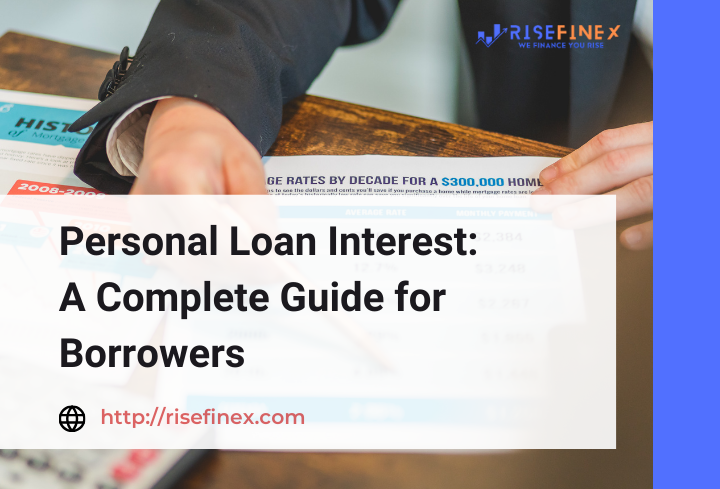Personal Loan Interest Rates: A Complete Guide for Borrowers
Everything You Need to Know About Securing the Best Personal Loan Rates in 2025 | 5 mins Read
 What Are Personal Loan Interest Rates?
Personal loan interest rates represent the cost of borrowing money, expressed as a percentage of the total loan amount. For example, if you borrow $10,000 with an interest rate of 10%, you’ll pay $1,000 annually in interest alone (not including fees or principal repayment).
There are two primary types of interest rates borrowers encounter:
What Are Personal Loan Interest Rates?
Personal loan interest rates represent the cost of borrowing money, expressed as a percentage of the total loan amount. For example, if you borrow $10,000 with an interest rate of 10%, you’ll pay $1,000 annually in interest alone (not including fees or principal repayment).
There are two primary types of interest rates borrowers encounter:
- Fixed Interest Rates
- Stay the same for the entire loan term.
- Predictable monthly payments.
- Ideal for long-term budgeting.
- Variable Interest Rates
- Change over time based on market conditions.
- Can start lower than fixed rates but may rise later.
- Suitable for borrowers comfortable with risk.
- Save money by comparing lenders.
- Negotiate better terms.
- Avoid overpaying in interest.
- Improve your overall financial health.
- Credit Score
- Income and Employment Stability
- Debt-to-Income Ratio (DTI)
- Loan Amount and Term
- Shorter loan terms usually come with lower rates but higher monthly payments.
- Longer terms may reduce monthly obligations but increase the overall cost of interest.
- Type of Lender
- Secured Personal Loans
- Backed by collateral (car, savings account, etc.).
- Tend to have lower interest rates due to reduced lender risk.
- Risk: if you default, the lender can seize the collateral.
- Unsecured Personal Loans
- Do not require collateral.
- Interest rates are higher because lenders assume greater risk.
- Popular for debt consolidation and personal expenses.
- Annual Percentage Rate (APR): This includes interest plus fees, offering a clearer picture of borrowing costs.
- Fixed vs. Variable Rates: Choose based on your comfort with predictability versus flexibility.
- Prepayment Penalties: Some lenders charge fees for paying off loans early.
- Additional Fees: Origination fees, late payment charges, and processing costs can add up.
- Improve Your Credit Score
- Pay bills on time.
- Reduce credit card balances.
- Avoid unnecessary hard inquiries before applying.
- Apply with a Co-Signer
- Choose a Shorter Loan Term
- Shop Around
- Leverage Relationship with Your Bank
- Borrower A – Excellent Credit (Score: 760)
- Loan Amount: $15,000
- Term: 3 years
- Interest Rate: 8%
- Monthly Payment: $470
- Total Interest: $1,926
- Borrower B – Average Credit (Score: 680)
- Loan Amount: $15,000
- Term: 3 years
- Interest Rate: 15%
- Monthly Payment: $520
- Total Interest: $3,730
- Borrower C – Poor Credit (Score: 580)
- Loan Amount: $15,000
- Term: 3 years
- Interest Rate: 28%
- Monthly Payment: $622
- Total Interest: $7,370
- Credit Cards: 18%–29% on average (higher than most personal loans).
- Home Equity Loans: 6%–10% (secured by your home, lower risk for lenders).
- Payday Loans: 200%–400% APR (extremely costly, best avoided).
- Lines of Credit: Rates vary depending on creditworthiness, often slightly higher than personal loans.
- Personal loan interest rates determine the total cost of borrowing.
- Rates are influenced by credit score, income, loan term, and lender type.
- Comparing offers and improving credit can significantly lower costs.
- Unsecured loans tend to have higher rates than secured loans, but they also carry less risk to personal assets.
- Staying informed about market conditions helps borrowers make smarter financial choices.





